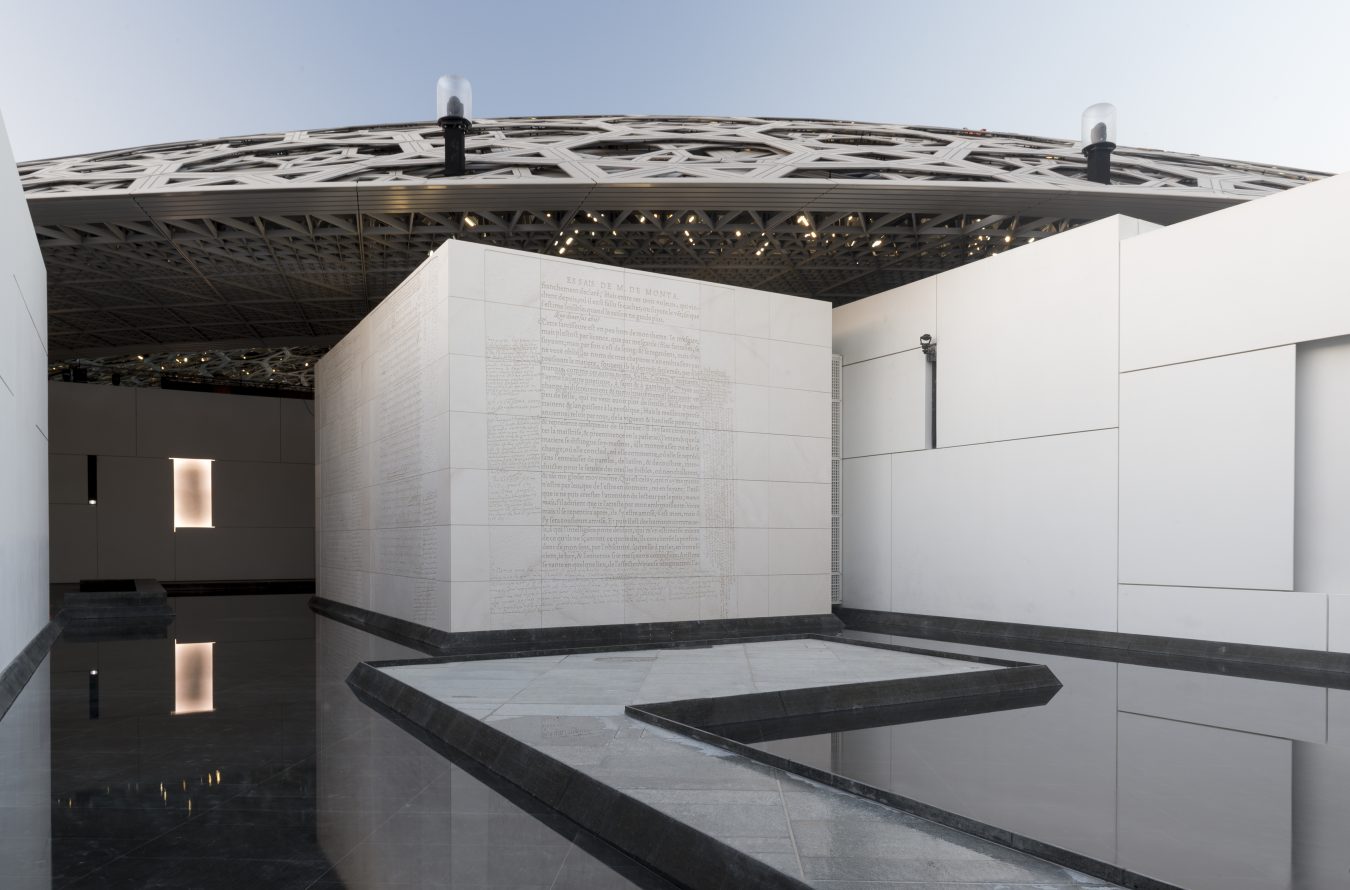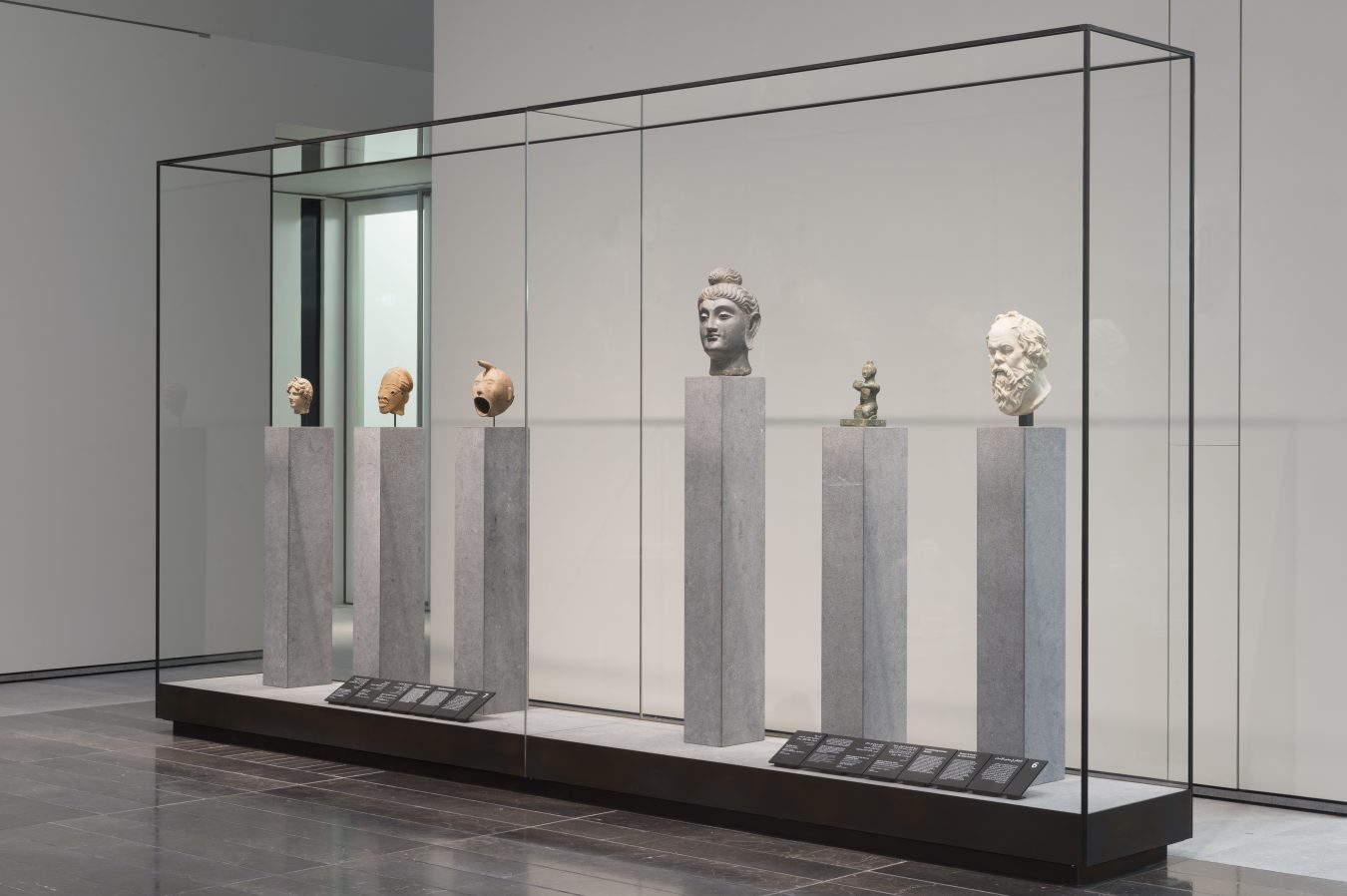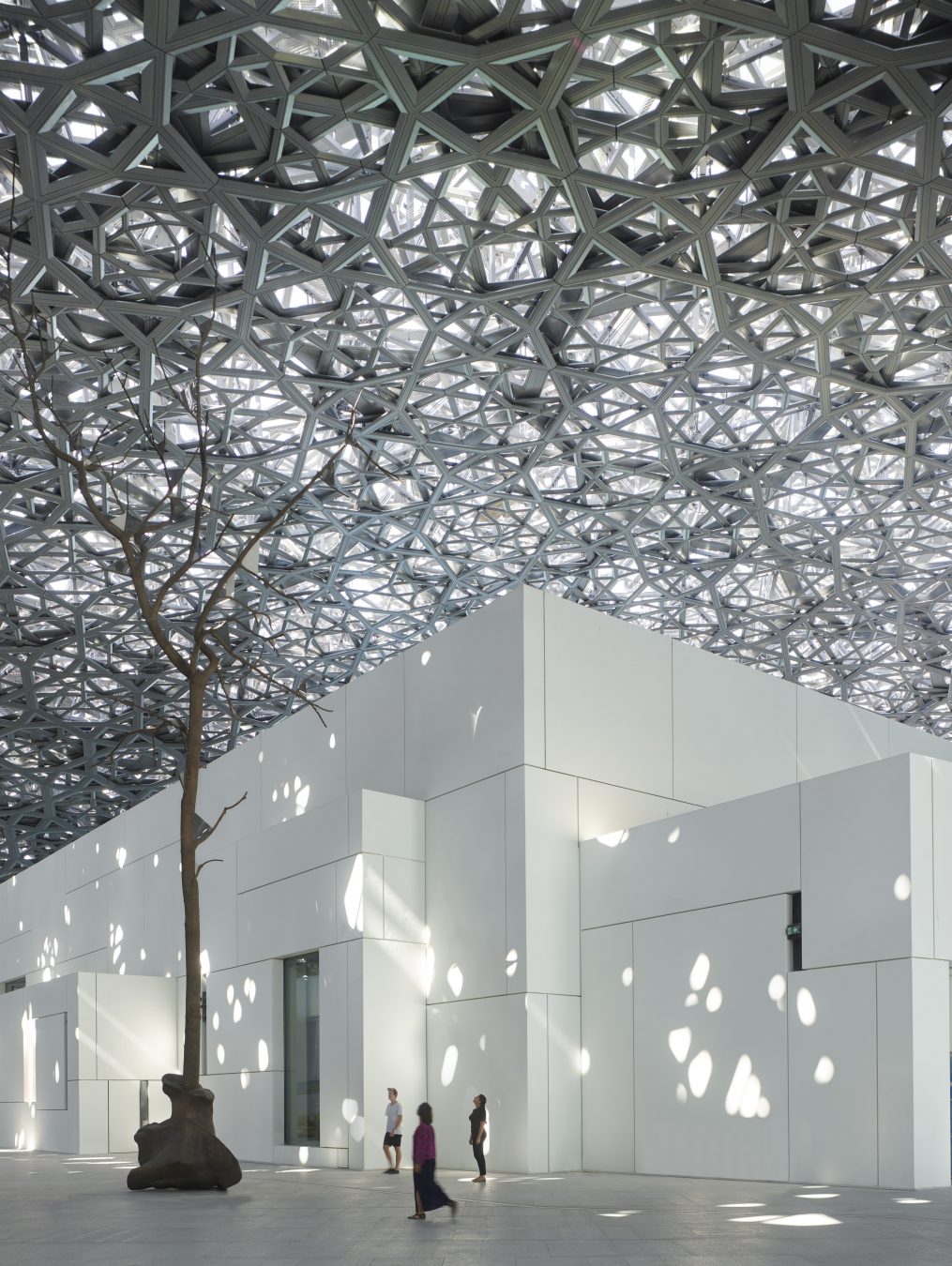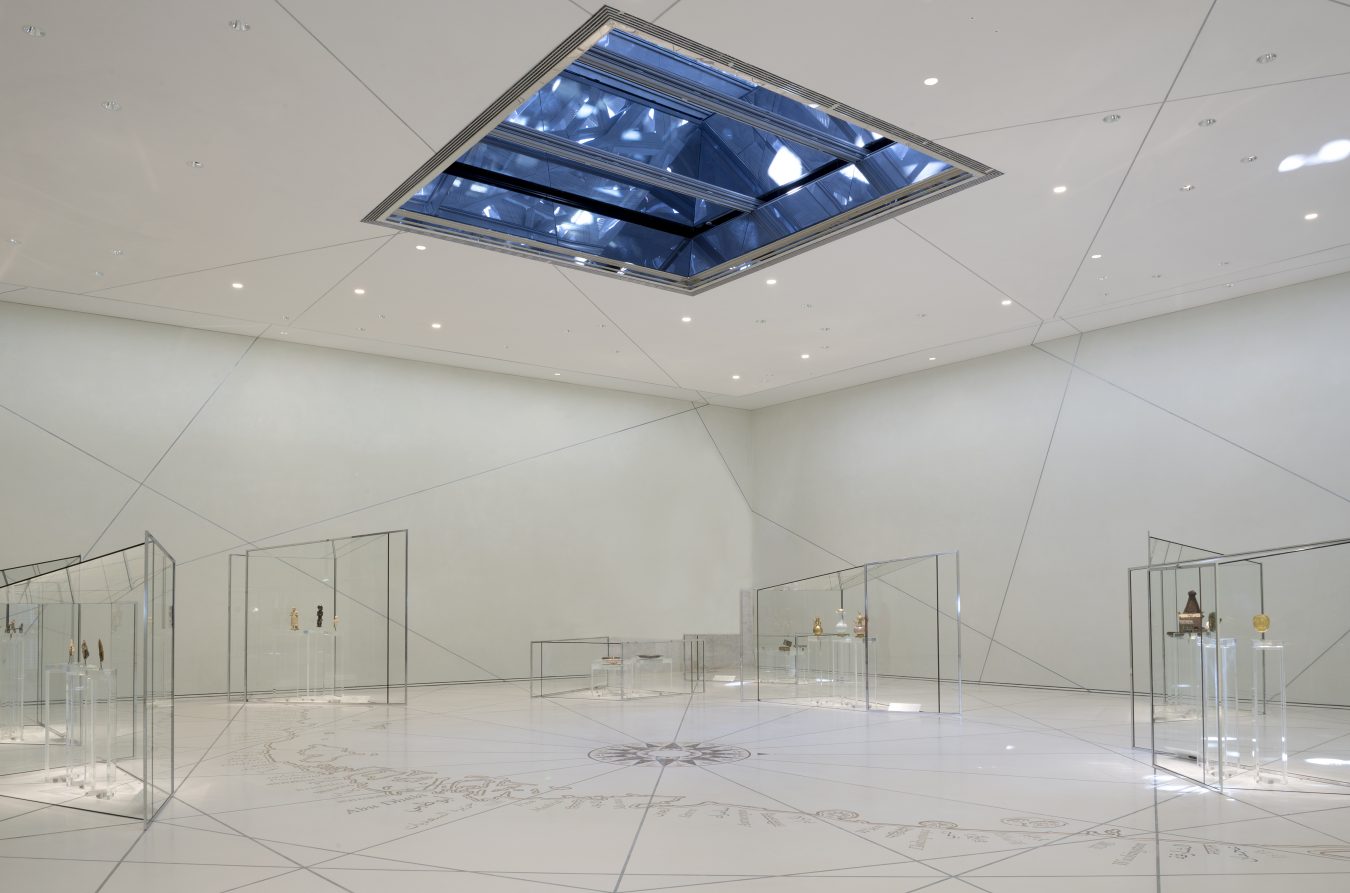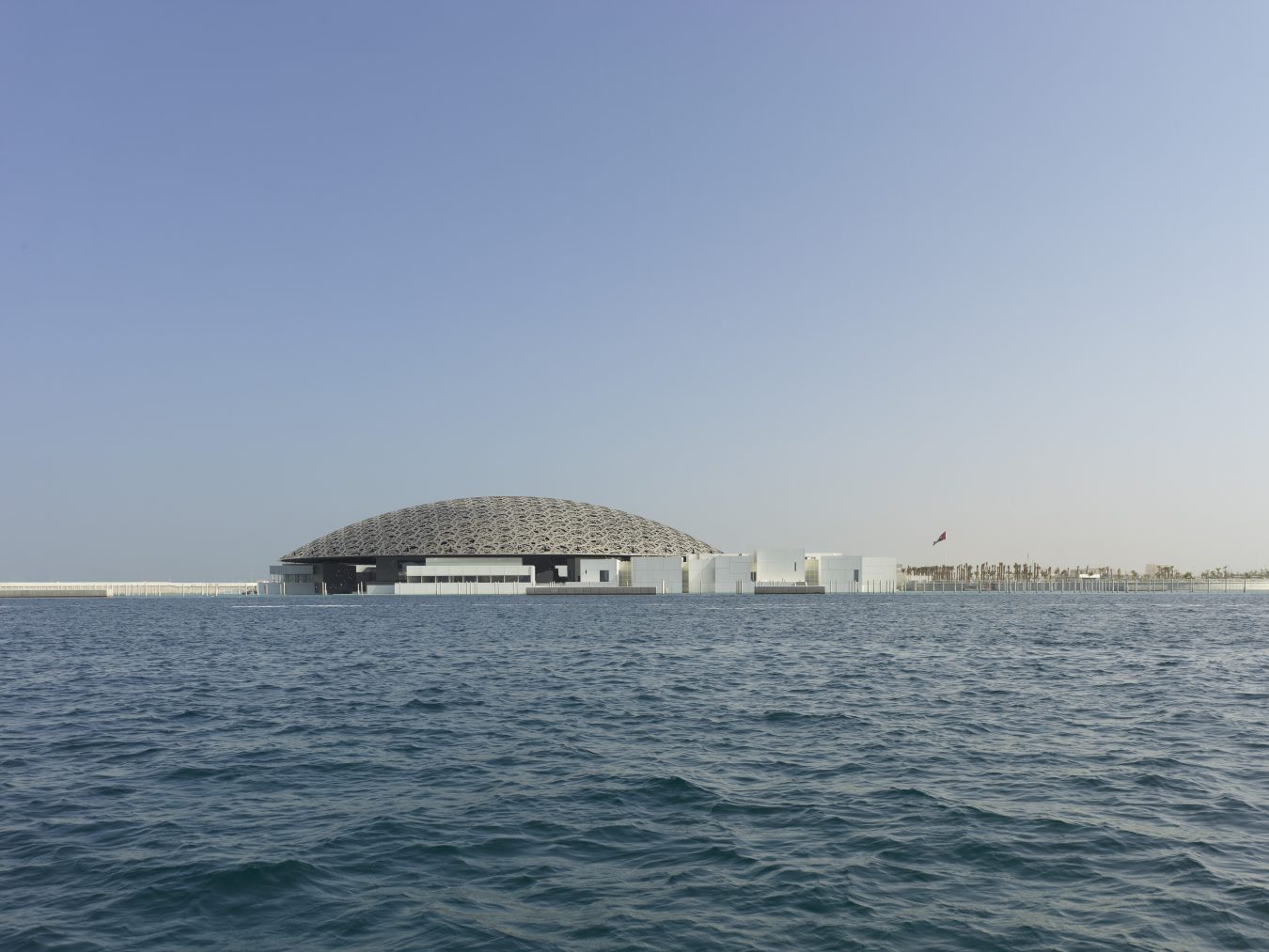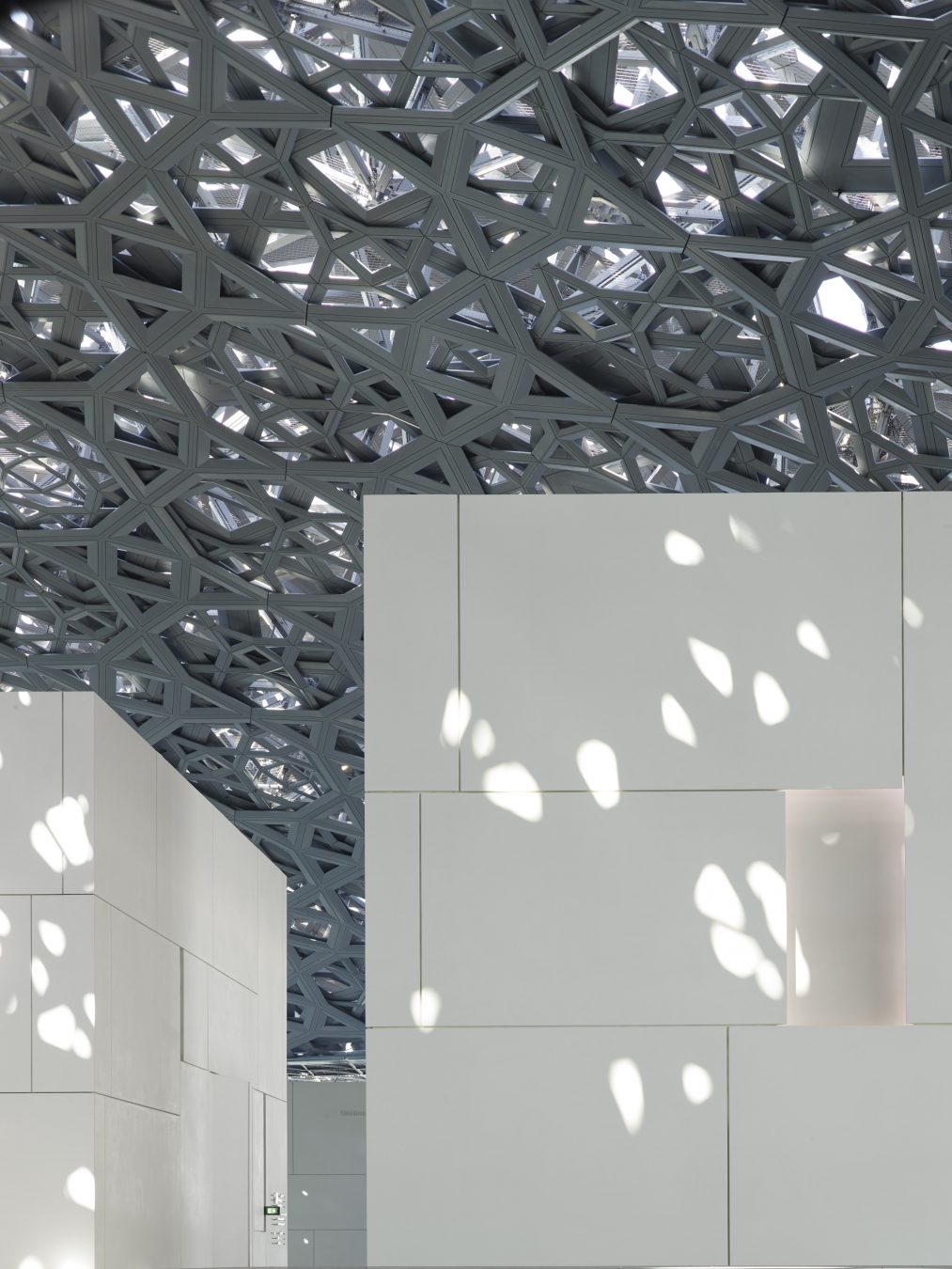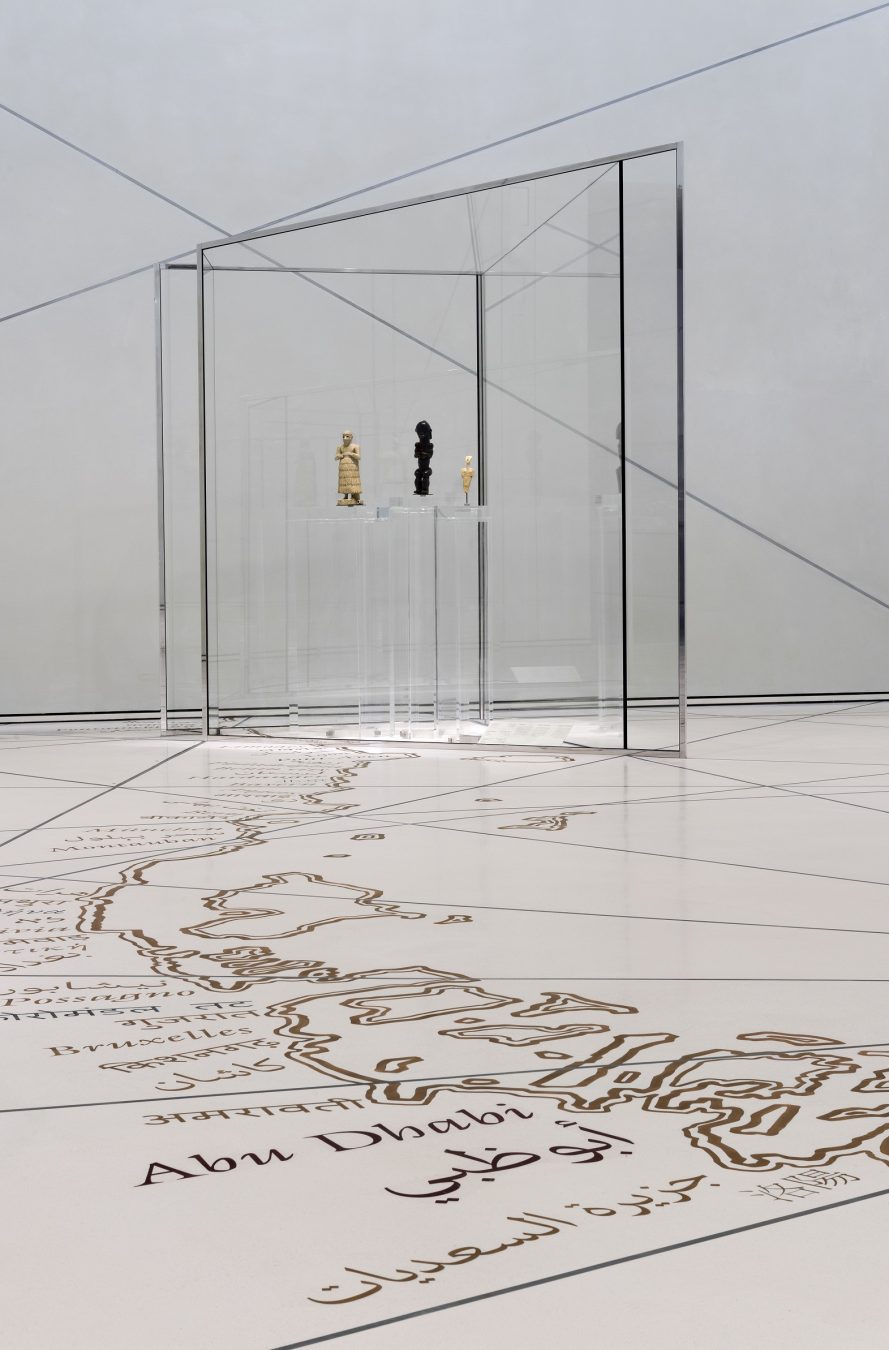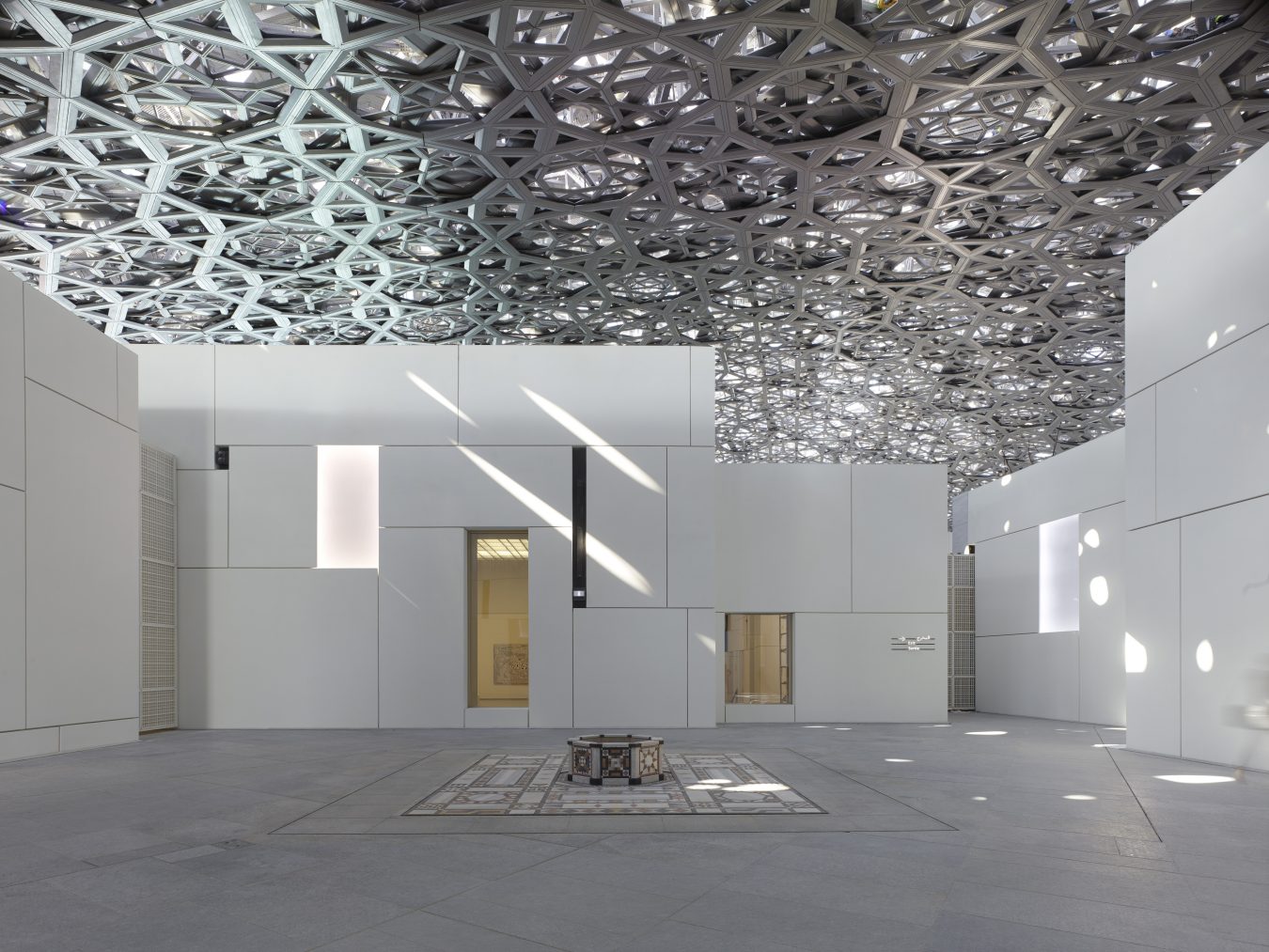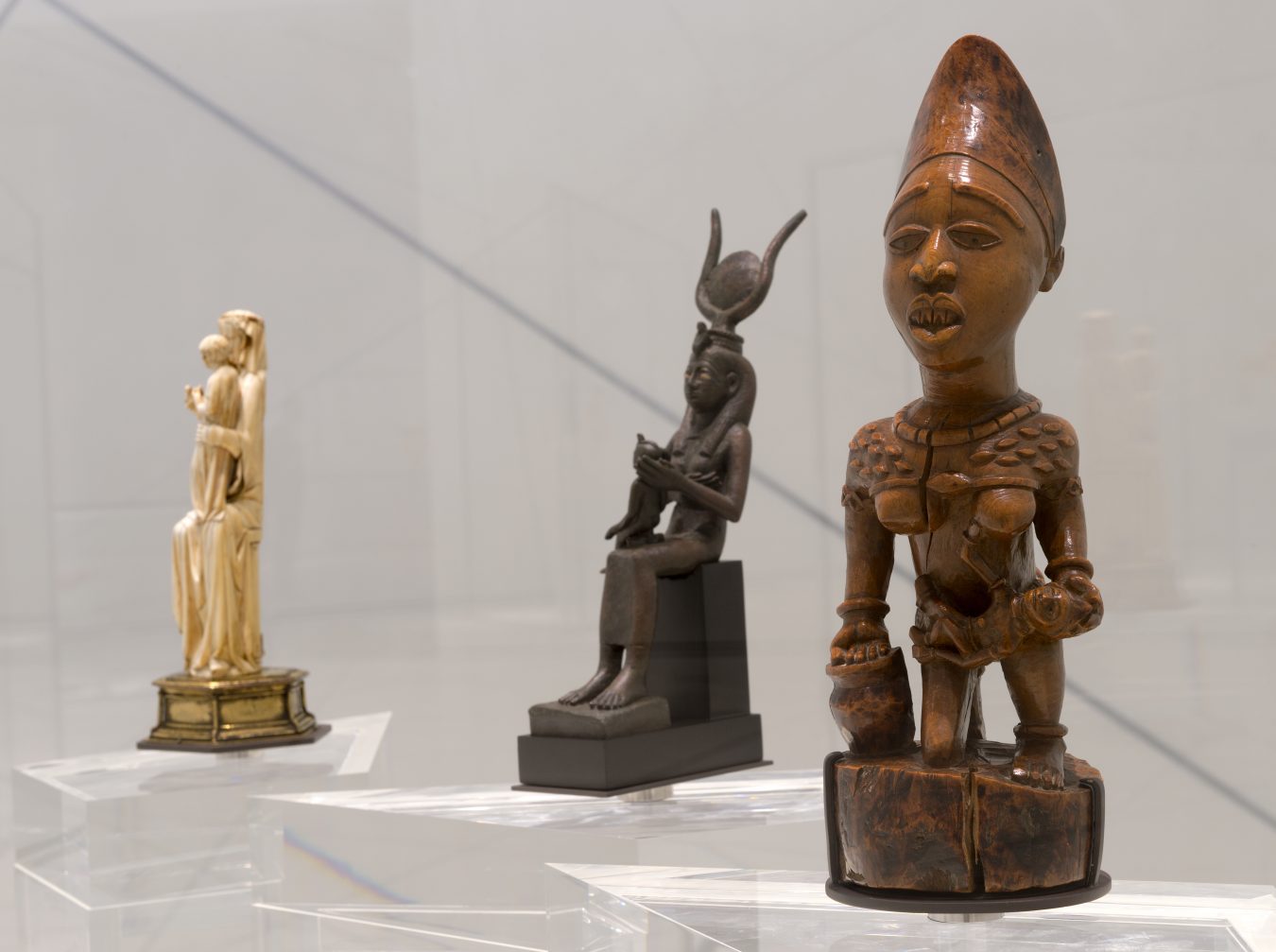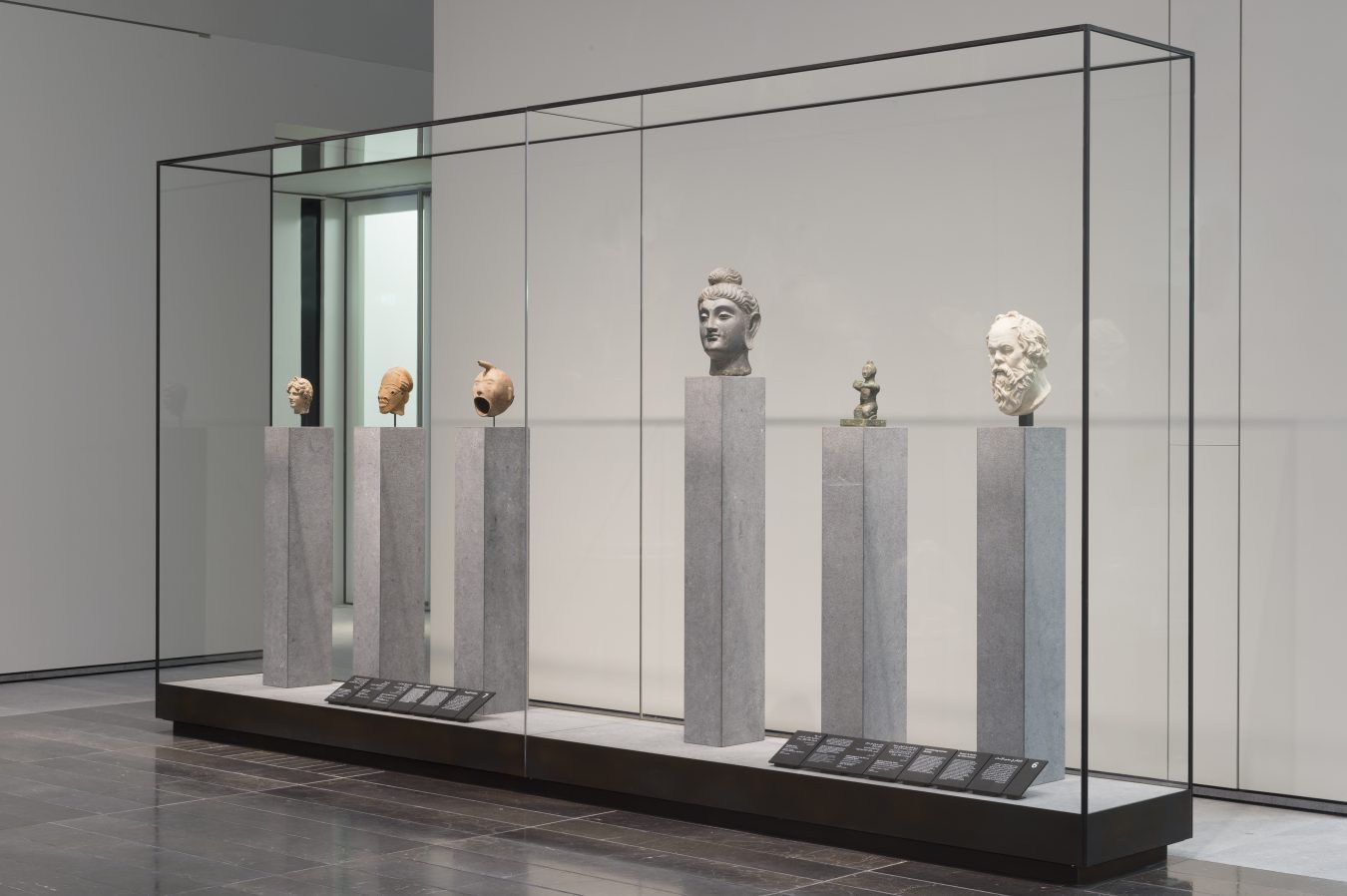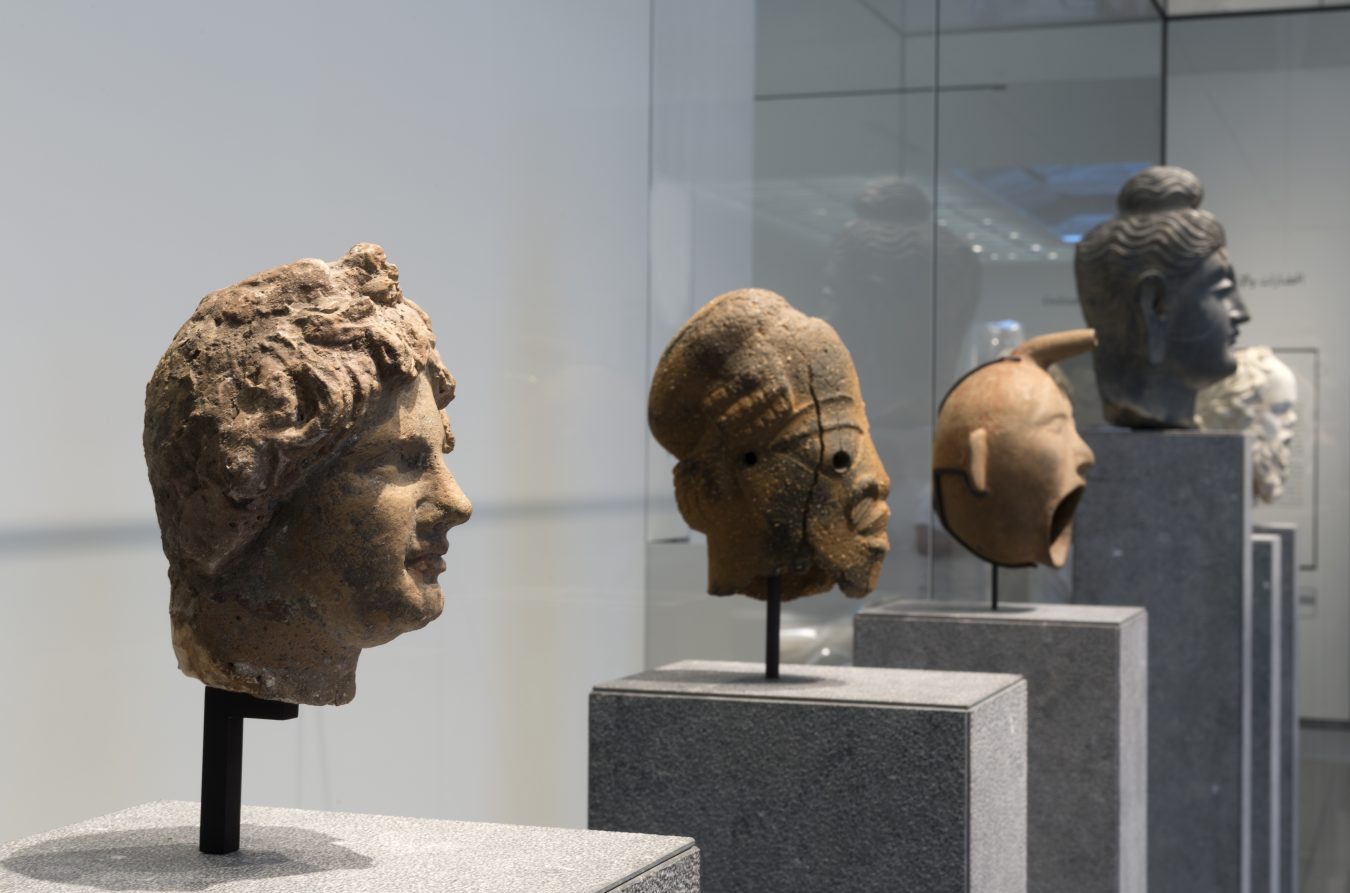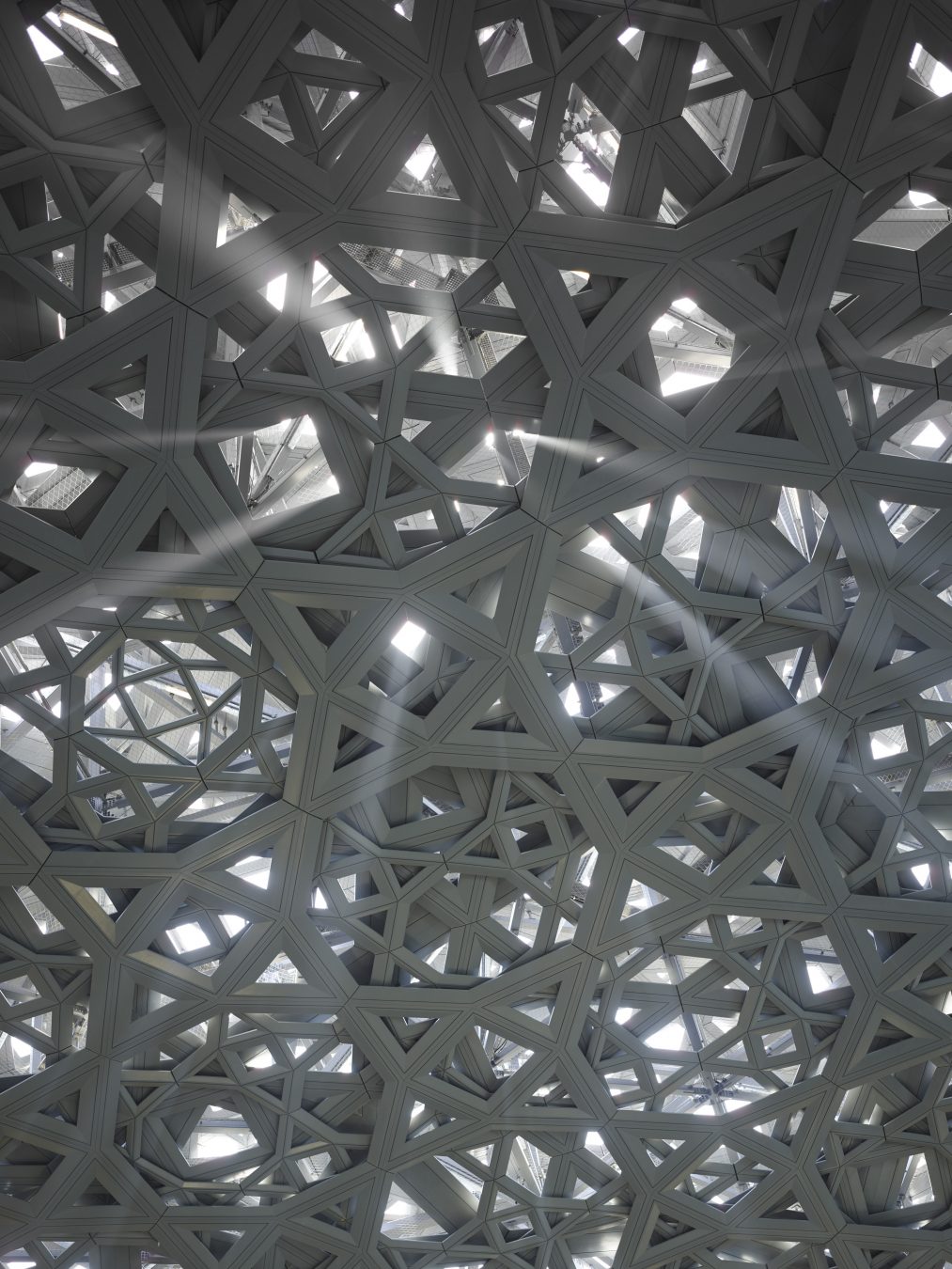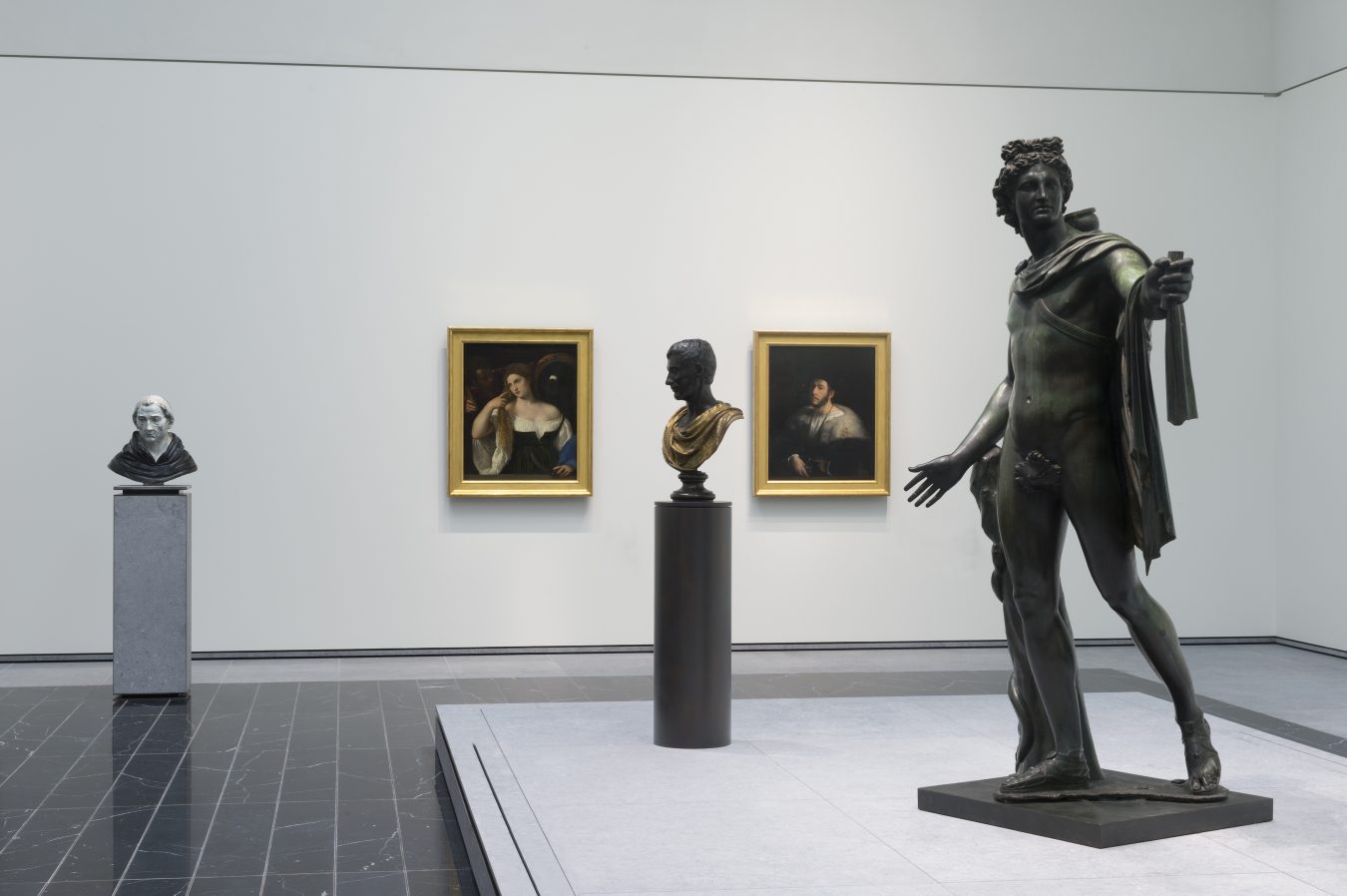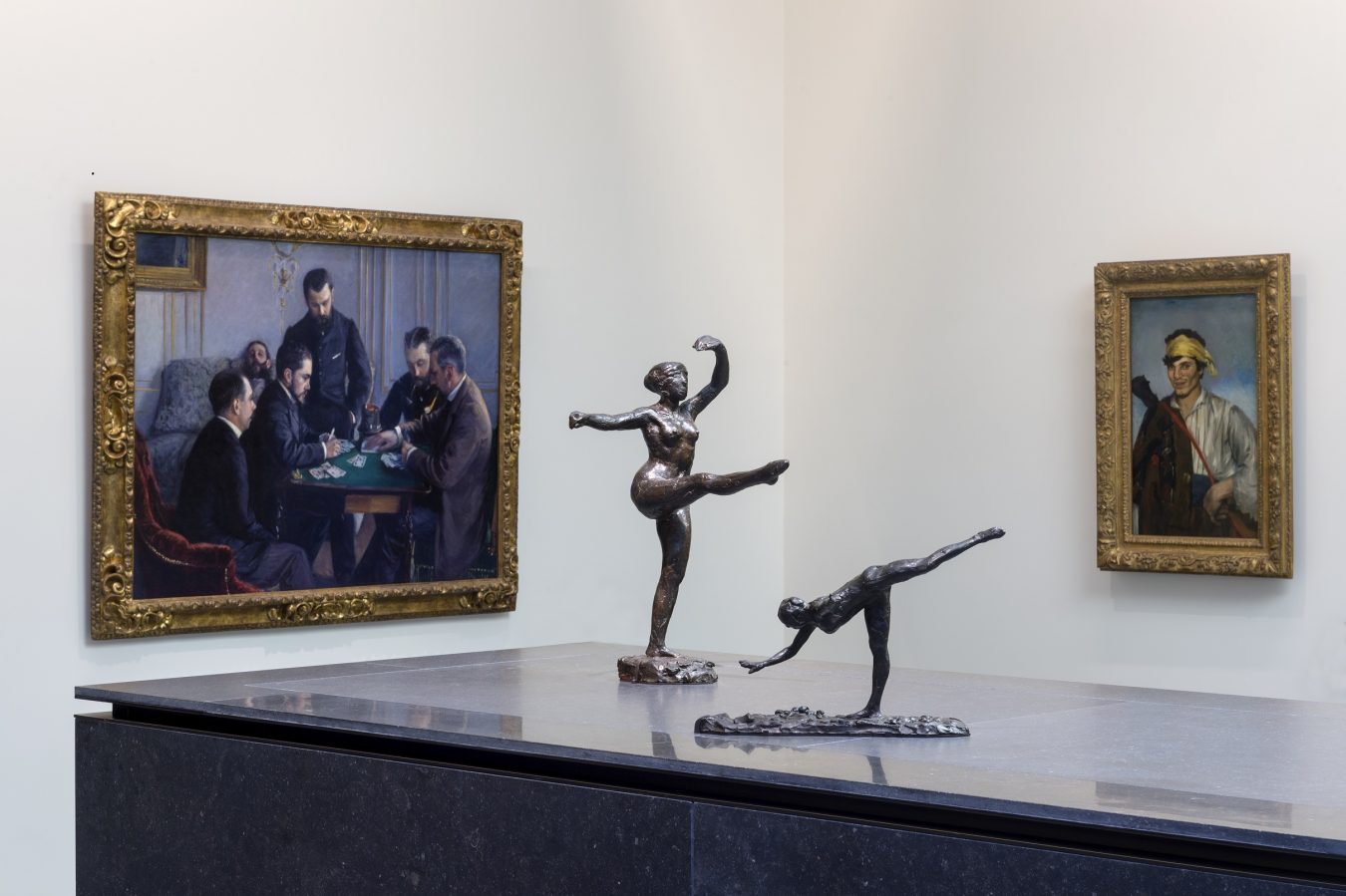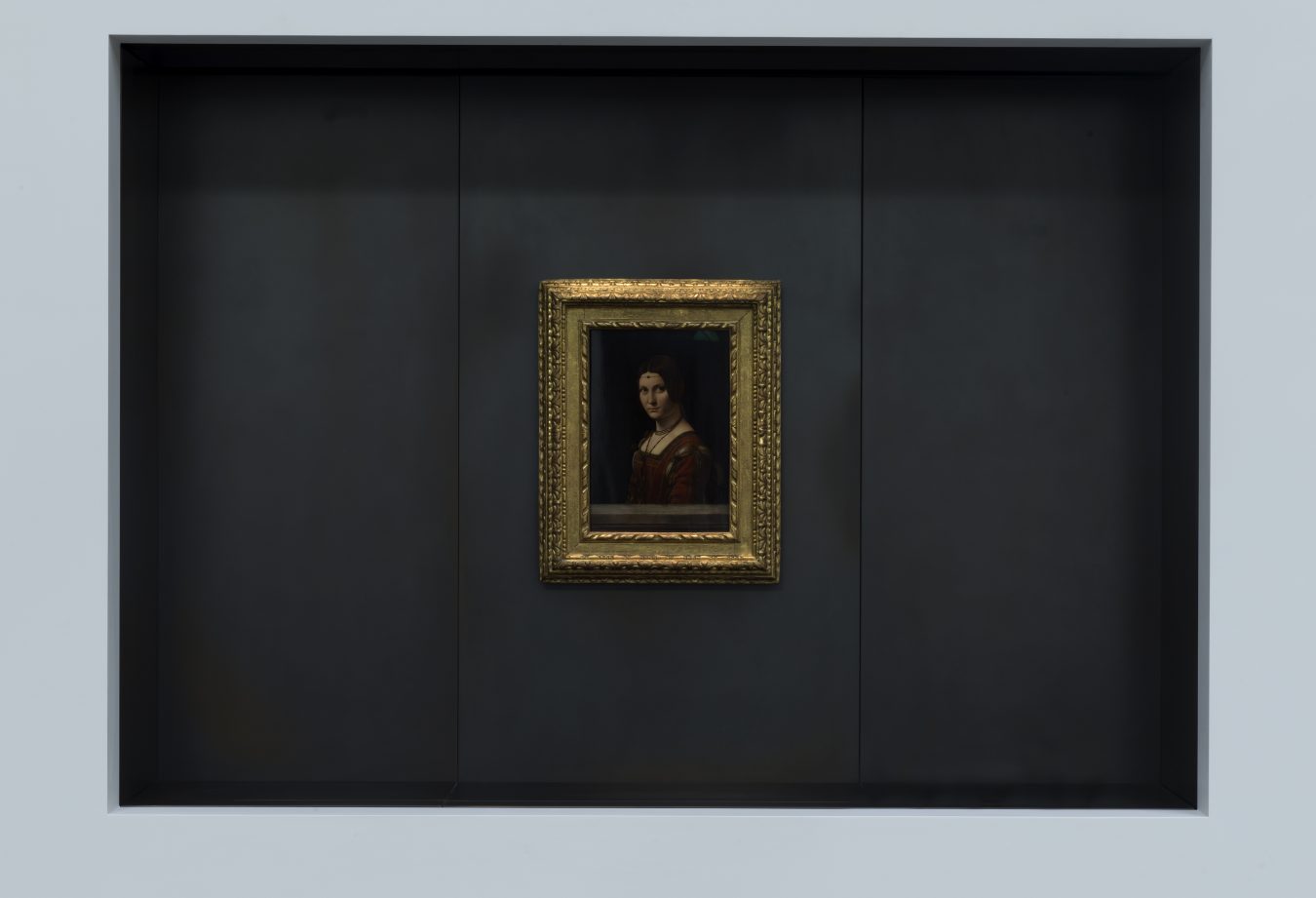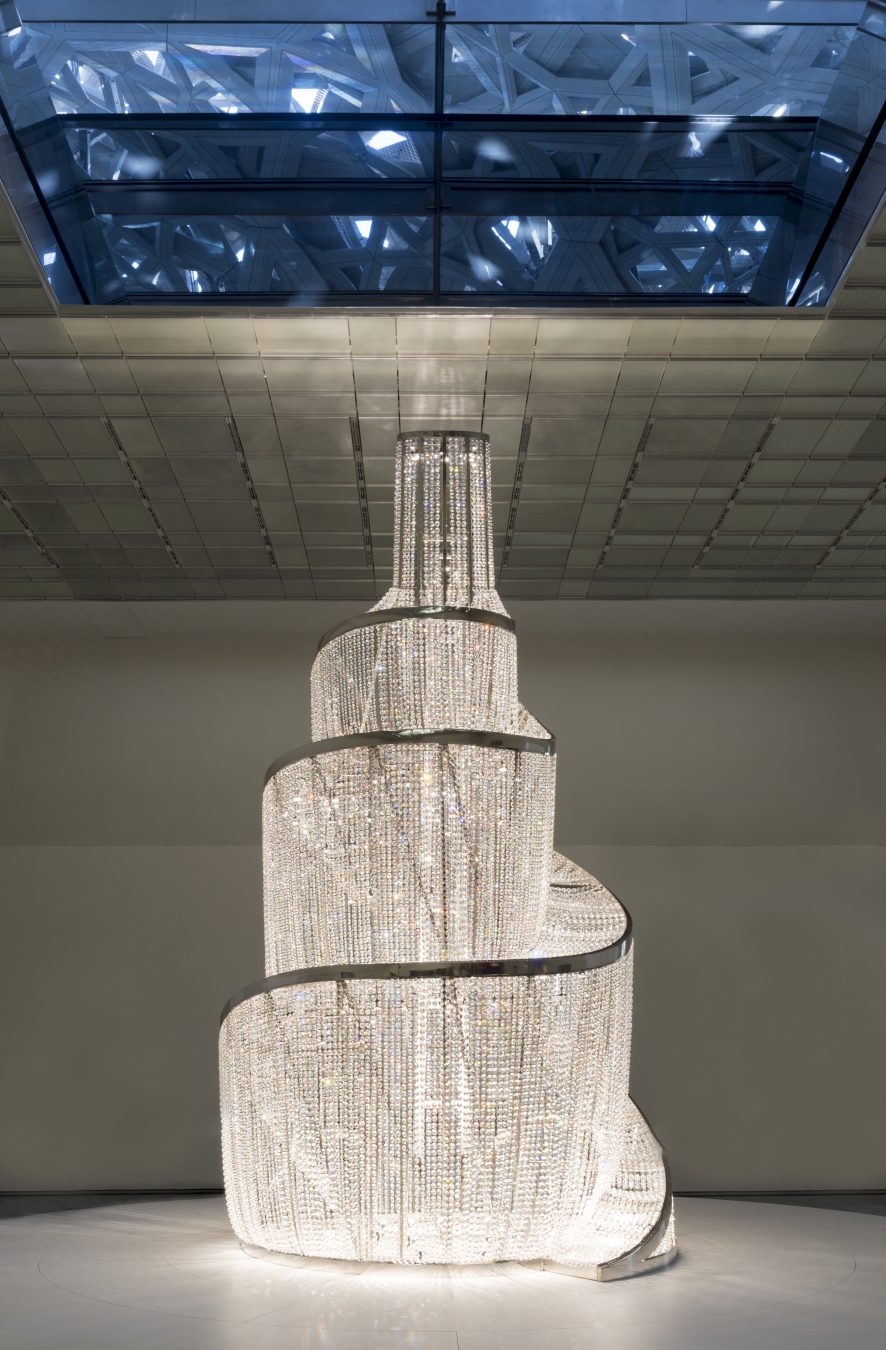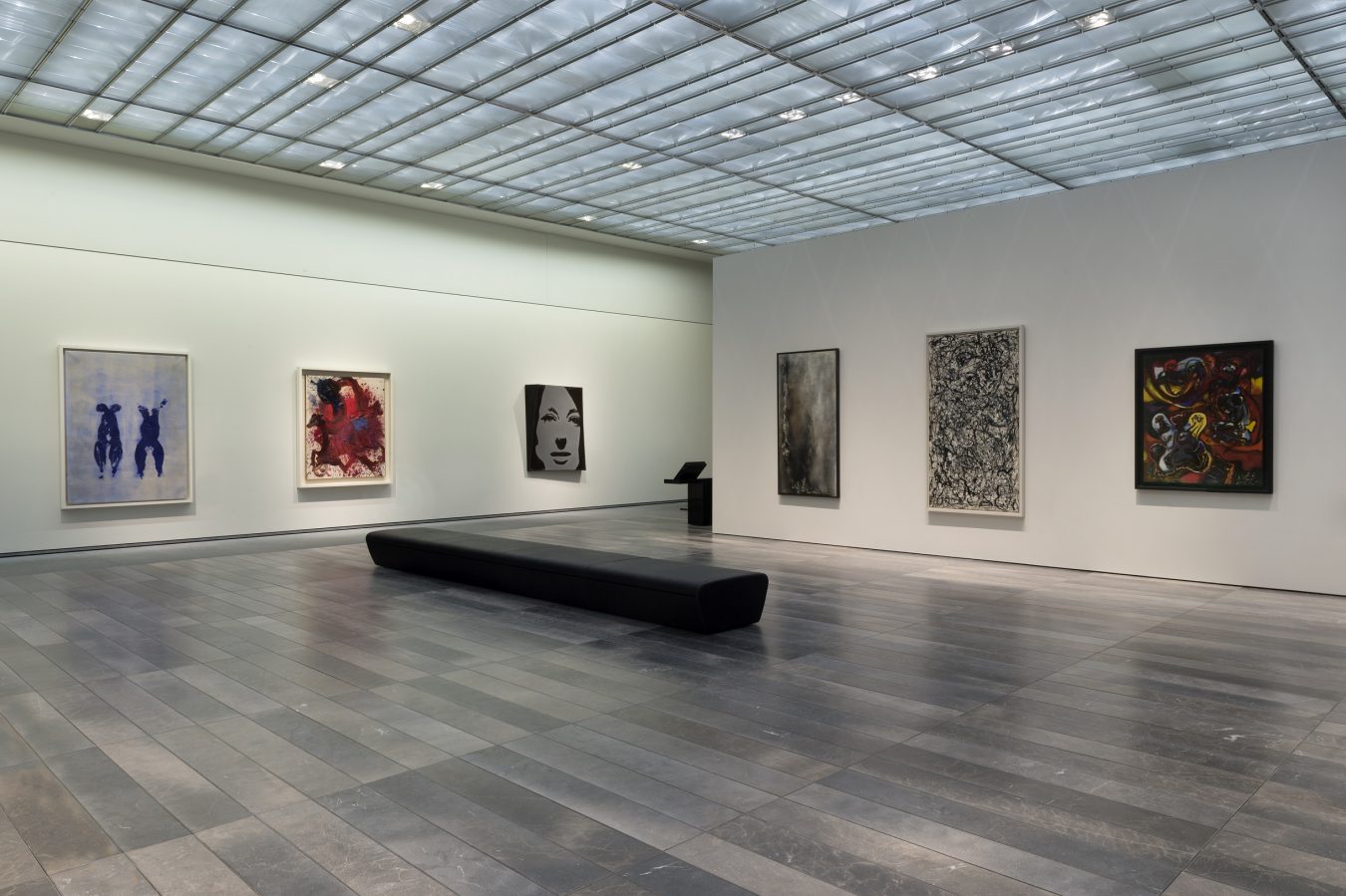More than six million people visit the world’s most famous painting each year at the musée du Louvre in Paris. To see the Mona Lisa is a lesson in patience, jostling into position to get a glimpse of Leonardo Da Vinci’s masterpiece. To see his La Belle Ferronnière is another experience entirely—one of serenity and space, allowing viewers to intimately study the reputed 15th-century mistress of Francis I in her deep red, ornate velvet dress. The painting is named for the woman’s jewelled ferronière, or headband, which decorates her pale forehead above a most serious gaze. Her features have been made all the more vivid thanks to a controversial restoration of the painting in 2015 by the musée du Louvre, which owns five of the 16 surviving Da Vinci paintings known to be in existence.
La Belle Ferronnière is not in Paris, but rather 6,700 kilometres away in Abu Dhabi, the capital of the United Arab Emirates. It is the first Da Vinci painting to be hung in the UAE. In fact, Da Vinci pieces rarely make it outside of Europe—the only other work to do so is the Ginevra de’ Benci, which is displayed in the National Gallery of Art in Washington, D.C. La Belle Ferronnière hangs in the Louvre’s first international outpost: the Louvre Abu Dhabi.
The portrait sits in Gallery 7: The World In Perspective, one of 12 galleries, or chapters, that take visitors on a chronological journey of art through the ages. La Belle Ferronnière is in good company with more than 600 pieces of art in the inaugural installation presented across 6,400 square-metres of gallery space. Half of the museum’s collection is from its own rich holdings, with the other half consisting of important pieces from 17 partner institutions in France, including, of course, the Louvre, along with the Centre Pompidou and the musée d’Orsay. The collaboration is unprecedented; these French institutions have never come together before on such a scale. The Louvre Abu Dhabi is the result of a rare government accord signed in 2007 between the French government and the United Arab Emirates. Delayed by five years, the Louvre Abu Dhabi is rumoured to have cost more than one billion euros to bring to fruition, including a price tag of 400 million euros to be able to carry the esteemed Louvre name for more than 30 years.
The Louvre Abu Dhabi opened on November 11, 2017. It is the first museum of its kind in the Arab region, offering a new perspective on the history of art in a globalized world. It accomplishes this goal by carefully curating artifacts from all over the world, placing them in each gallery with categories including the birth of the first villages; universal religions; cosmography; the magnificence of the royal court; and the modern world. Like the original Louvre, the museum can be overwhelming in its scale. However, this modern space is easier to navigate, with the architect creating a journey that is chronological from prehistory to the present day, and the curators making sense of the history through their groupings of artifacts with accompanying explanations.
The museum’s collection spans the history of humanity and explores a universal narrative, which is why, for instance, leaf from the Blue Qur’an (North Africa, Spain, or Sicily, c. 880-950 century AD) can be found in the same intimate, dimly-lit room as the Pentateuch: First part of the Torah (Yemen, Sana’a, c. 1498) as part of Gallery 4: Universal Religions. The range of art is incredible, from the Sarcophagus of Henuttawy (Egypt, 950-900 BCE) to instantly recognizable pieces of modern art, such as Whistler’s Arrangement in Grey and Black No. 1 (1871); Van Gogh’s Self Portrait (1887); and Mondrian’s Composition with Blue, Red, Yellow and Black (1922). Contemporary art has a special place of its own with Ai Weiwei’s Fountain of Light (Beijing, 2016) at the centre of the closing Gallery 12: A Global Stage. Furthering its dedication to contemporary art, the Louvre Abu Dhabi commissioned two site-specific installations: For Louvre Abu Dhabi by Jenny Holzer, and Germination by Giuseppe Penone, displayed in the already-iconic open-air dome.
A masterpiece designed by French architect Jean Nouvel, the Louvre Abu Dhabi is located on the waterfront in Abu Dhabi’s newly created cultural district on Saadiyat Island. Approaching the gallery feels like arriving at an imagined modern alien city in a sci-fi film, its delicate but mighty metallic dome emerging from the waterways of the Persian Gulf. Nouvel has designed the Louvre Abu Dhabi as a medina, or museum city, which combines traditional Arabic inspiration with contemporary design and cutting-edge, energy-efficient engineering.
Begin the journey through the 12 galleries, with twists and turns adding to the sense of exploration and discovery. Along the way, pass floor-to-ceiling windows directly overlooking the water as if on an expansive boat rather than in a museum. Emerging from Gallery 12, end up under a sky of 7,850 unique metal stars set in a complex geometric form, which when sunlight filters through, create a moving “rain of light” pattern echoing that of the overlapping palm trees in the UAE’s oases. Truly a marriage of East and West, the Louvre Abu Dhabi is a new cultural institution for the international art world.
Read more in Arts.

